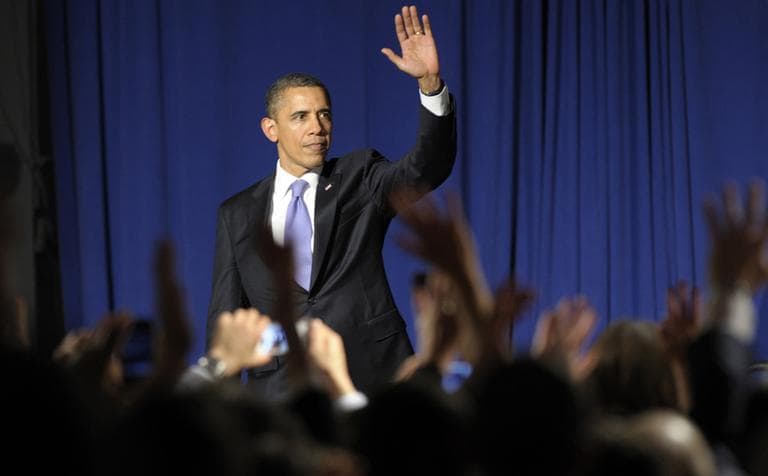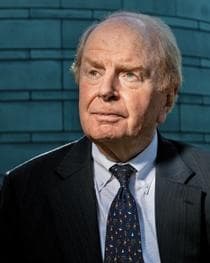Advertisement
How To Raise A Billion Dollars
Resume
The U.S. has a unique and outstanding tradition of philanthropy. There were over 1.3 million charities and foundations in the U.S. in 2010, that's one and a half times as many as there were 20 years ago. But over 300,000 of those groups were in danger of losing their status because of administrative and financial problems, and the country's top 400 charities have been struggling through the economic downturn.
Howard Stevenson has a new primer on fundraising based on his long experience as a donor and his involvement in raising over a billion dollars for a number of non-profits. He says that successful fundraisers need to think like entrepreneurs — someone who "is in the pursuit of opportunity beyond resources they control."

Stevenson says non-profits and new businesses share a key problem — both have missions that exceed their resources.
The Four Big Questions
Stevenson told Here and Now's Robin Young that fundraisers need to answer four big questions:
- Are You Doing Important Work?
- Are You Well Managed?
- Will My Gift Make A Difference?
- Will The Experience Be Satisfying To Me?
Identify A Motive
Stevens says there are three categories of giving. First, there's the end of the year giving where a potential donor might feel inspired to write a check for a tax break or because they see a need — for example the earthquake in Haiti. Then there's social giving, people who like to give money because they enjoy going to the parties or galas.
But Stevenson says the really big money comes from people who "want to make a difference in the world." So the key is learning why potential donors might think the cause is important.
"So if I want to raise scholarship funds, which I did," Stevenson said. "If you're a liberal, I want to say 'We want to make sure the disadvantaged have the same opportunities as we did,' and if you're a conservative I have to say something like 'We need to make sure the best talent is available to serve our great country.'"
An excerpt from "Getting To Giving"
_
Fundraising—I often tell people—is the best career I’ve ever had. Most often, I make that statement in response to an assertion like, “How can you stand to do fundraising? It’s so unpleasant!”
Yes, I’ll admit that it’s in my nature to counter people’s expectations. (I can be contrarian.) But my comment is also the absolute truth: I enjoy fundraising immensely, much more than many other things I’ve done in my life.
Why? For one thing, it’s a team sport. I get to work with other fundraisers, many of whom are extremely generous in sharing their experience and wisdom. Nothing is quite as much fun as a high-functioning team.
But even more important, as a fundraiser, I’m proud of the work I’m doing. I’m supporting a cause I’m personally committed to, and I’m helping like-minded donors do the same. I get to meet donors who in many cases are fascinating and impressive individuals, and I get to talk with them in intimate ways about meaningful issues that are very important to both of us. In those circumstances—I truly believe—we are doing something, together, to make the world a better place.
That said, I can understand why fundraising has become grist for the cartoonist’s mill—as you saw above, and will see sprinkled throughout this book—and why so many board members and executive directors seem to hate it. People often assume that fundraising is about hearing “no” all the time. Fundraising is time-consuming, especially for people who already have too much to do. You may feel like you’re in unfamiliar, even hostile territory. And for some people, asking for money feels like begging, and no one wants to be a beggar.
That fear of rejection turns out to be a misapprehension. When I began fundraising, I was told to expect a 25 percent closing rate—one in four—with my major gift prospects. What I learned was that you can do far better than that—maybe three times as well—if you do it right. Those who do it right raise more money. If you’ve done your homework, people say “yes” more often than not, and that is tremendously satisfying. It’s measurable, too: you know exactly how you’re doing. That makes it fun.
At the end of the day, individual fundraising is about potential donors, closing rates, and average gift size. If you’re talking to people who don’t care about what you’re doing, you’re likely to be rejected. That’s especially disappointing when your cause is so important to you on a personal level. On the other hand, if you’re able to find the right prospects, and convince more of them to give more, you magically will raise more money… and probably have a lot more fun doing it.
Guest:
- Howard Stevenson, co-author, with Shirley M. Spence, of "Getting to Giving: Fundraising the Entrepreneurial Way by a Billion-dollar Fundraiser"
This segment aired on March 8, 2012.